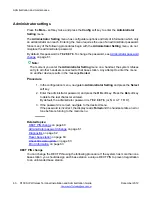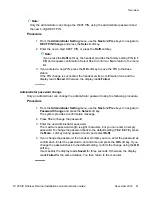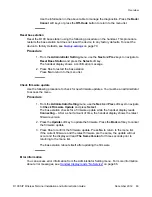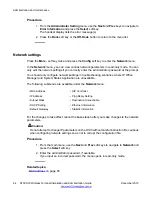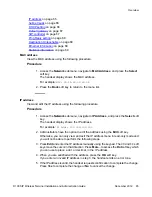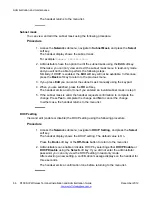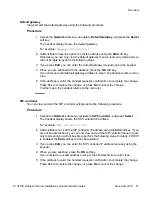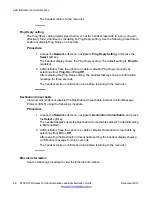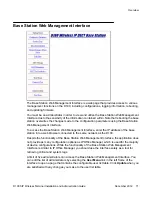
Using SSL VPN
In some network deployment scenarios, the IP Office and the base station are located remotely
from the administrator. In this case, an administrator can obtain base station logs using a
Secure Sockets Layer Virtual Private Network (SSL VPN) to remotely access IP Office and
LAN devices.
For information on configuring a SSL VPN tunnel, see the
.
In addition to setting up a SSL VPN, you must use the following procedure to configure Network
Address and Port Translation (NAPT) rules for each VPN tunnel using IP Office Manager. Note
that each base station receives an entry in the NAPT table.
Procedure
1. In the IP Office Manager navigation list, select
Service
.
2. In the
Service
list, select the SSL VPN service where you want to configure NAPT
rules.
3. In the details pane for the service, select the
NAPT
tab.
4. Under
Application
, open the drop down list and select
Custom
.
The
Protocol
and
Internal Port Number
fields are automatically filled with the
default values.
5. Modify the
External Port Number
field.
6. Repeat steps 4 and 5 to configure rules for additional base stations.
7.
(Optional)
To delete an NAPT rule, use the empty column on the left side of the
table. Right-click in the empty cell next to the rule you want to delete and select the
Delete
option.
Next steps
Access each base station remotely using the VPN tunnel IP address and the external port
number configured in the NAPT rules table in IP Office Manager. The VPN tunnel address must
include the external port in the format:
http://<tunnel IP address>:<external port>
Log in to each base station and retrieve logs using the method described in
Rebooting the base station
You can reboot the base station using the Base Station Web Management Interface such that
the base station reboots either normally or into Maintenance Mode.
Administration and maintenance
74 D100 SIP Wireless Terminal Installation and Administration Guide
December 2012

